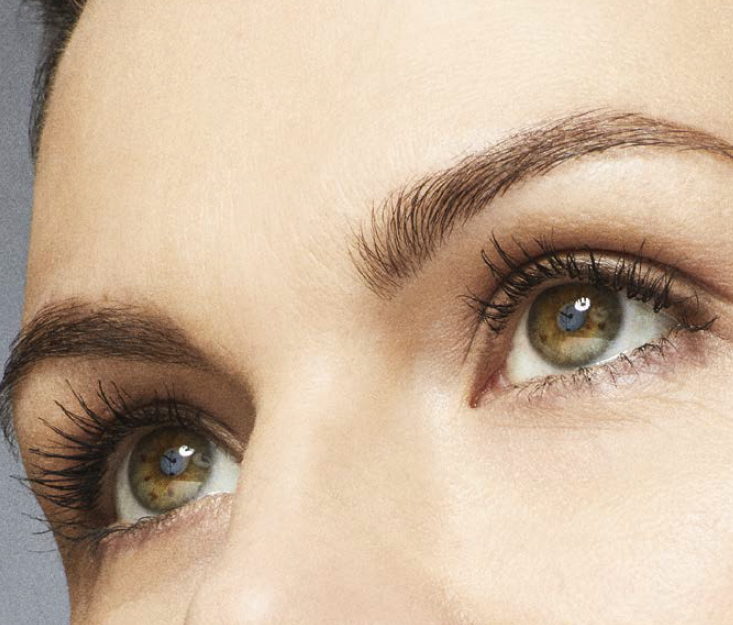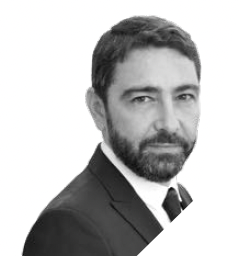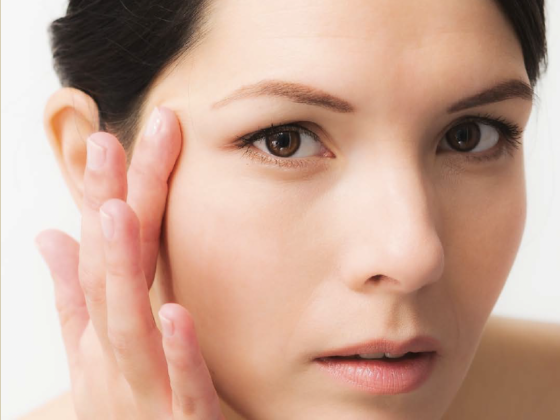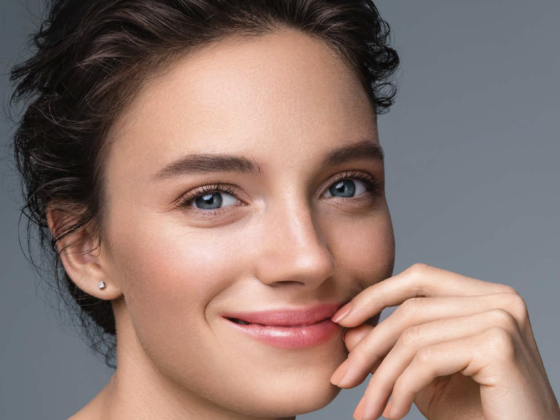Dr Michael Margulies
A new facial contouring technique that harmonises the play of light and shadow on a face with a hollowed temporal area, while preserving its natural appearance.
 From the age of 40 onwards, the temporal region tends to become hollow, especially as the face becomes thinner and more elongated. Situated on either side of the forehead, the temples are located above the zygomatic arch, on the temporal bone. Aging in this area is caused by the atrophy of the temporal muscle combined with a loss of fat, leaving a shadowy, hollow area.
From the age of 40 onwards, the temporal region tends to become hollow, especially as the face becomes thinner and more elongated. Situated on either side of the forehead, the temples are located above the zygomatic arch, on the temporal bone. Aging in this area is caused by the atrophy of the temporal muscle combined with a loss of fat, leaving a shadowy, hollow area.
Just like with the make-up techniques, it appeared useful to develop a temporal contouring technique that would catch the light, rework the area to enhance it and even open up the eyes by working on the entire temporal area from the zygomatic arch to the frontotemporal ridge. “Even if patients rarely come to treat their temporal fossa as a primary concern, if we properly assess the face and draw up a coherent treatment plan, we can explain to the patient the importance of treating this area,”explains Dr Michaël Margulies.
Protocol of the Temporal Contouring Method:
The particularity of this method is twofold: we use dermal fillers from Laboratoires Vivacy that are only mildly cross-linked, and inject them into the inter-fascia area to avoid any vasculonervous risks. It is essential to respect the superficial temporal arteries and veins to avoid significant bleeding, and to avoid the temporal motor nerve.
There are several fascias between the skin and the aponeurosis of the temporal muscle. The injection must be made between the superficial fascia, which is richly vascularised, and the deep fascia. This sliding plane is fairly easy to reach and particularly safe. This technique is only performed with a cannula (22 to 25 Gauge; 50 to 70 mm) and from a single entry point per side in order to remain in the same injection plane throughout the procedure.
This entry point can be lower on the zygomatic arch or higher near the hairline.
Initially, we use STYLAGE® M retrotraced lines in a fan shape. Then, between these STYLAGE® M retrotraced lines, we inject STYLAGE® Hydromax via nappage which, thanks to its rheology, allows us to obtain a homogeneous result that will shape the entire temporal area from the zygomatic arch to the forehead ridge, including the lateral periorbital region and the tail of the eyebrow.
The products used are STYLAGE® M, which has a viscosity that is particularly well suited to supporting this very thin area without the risk of it being visible, and STYLAGE® Hydromax, which is applied between the fascia to ensure an even layer.
The volume injected is 1 ml of STYLAGE® M and 1 to 1.5 ml of STYLAGE® Hydromax per side. Massage is necessary to homogenise the result. The result is immediate and optimal 15 days later. Of course, this technique can be combined with the much better-known deep needle injection with volumising products (e.g. STYLAGE® XXL).
The Temporal Contouring Method will provide a “padded” effect over the entire temporal area and hydrate the skin in this region.
Injections deep into the skin are more projecting and less moisturising.
The anti-aging benefits are both immediate, with the face looking healthier, more toned and less tired, and prolonged thanks to deep dermal hydration, leaving the skin plumped, redensified and better quality. The Temporal Contouring Method makes it possible to treat the entire temporal area, using mildly cross-linked products: STYLAGE® M and STYLAGE® Hydromax; in reasonable quantities in a superficial plane but in complete safety. As a complement to STYLAGE® XXL injections, it offers long-term shaping and hydration for a natural-looking result.
 Dr Michael Margulies: Morphological and anti-aging medicine, specialist in integrative medicine. 2020. Diploma in Mesotherapy – Faculty of Medicine – Sorbonne University 2015. Diploma in morphological and anti-aging medicine – University of Paris 5 – Paris-Descartes 2003. Doctor of Medicine State Diploma – University of Paris 7 Bichat. A trainer for Aptos and Vivacy.
Dr Michael Margulies: Morphological and anti-aging medicine, specialist in integrative medicine. 2020. Diploma in Mesotherapy – Faculty of Medicine – Sorbonne University 2015. Diploma in morphological and anti-aging medicine – University of Paris 5 – Paris-Descartes 2003. Doctor of Medicine State Diploma – University of Paris 7 Bichat. A trainer for Aptos and Vivacy.















